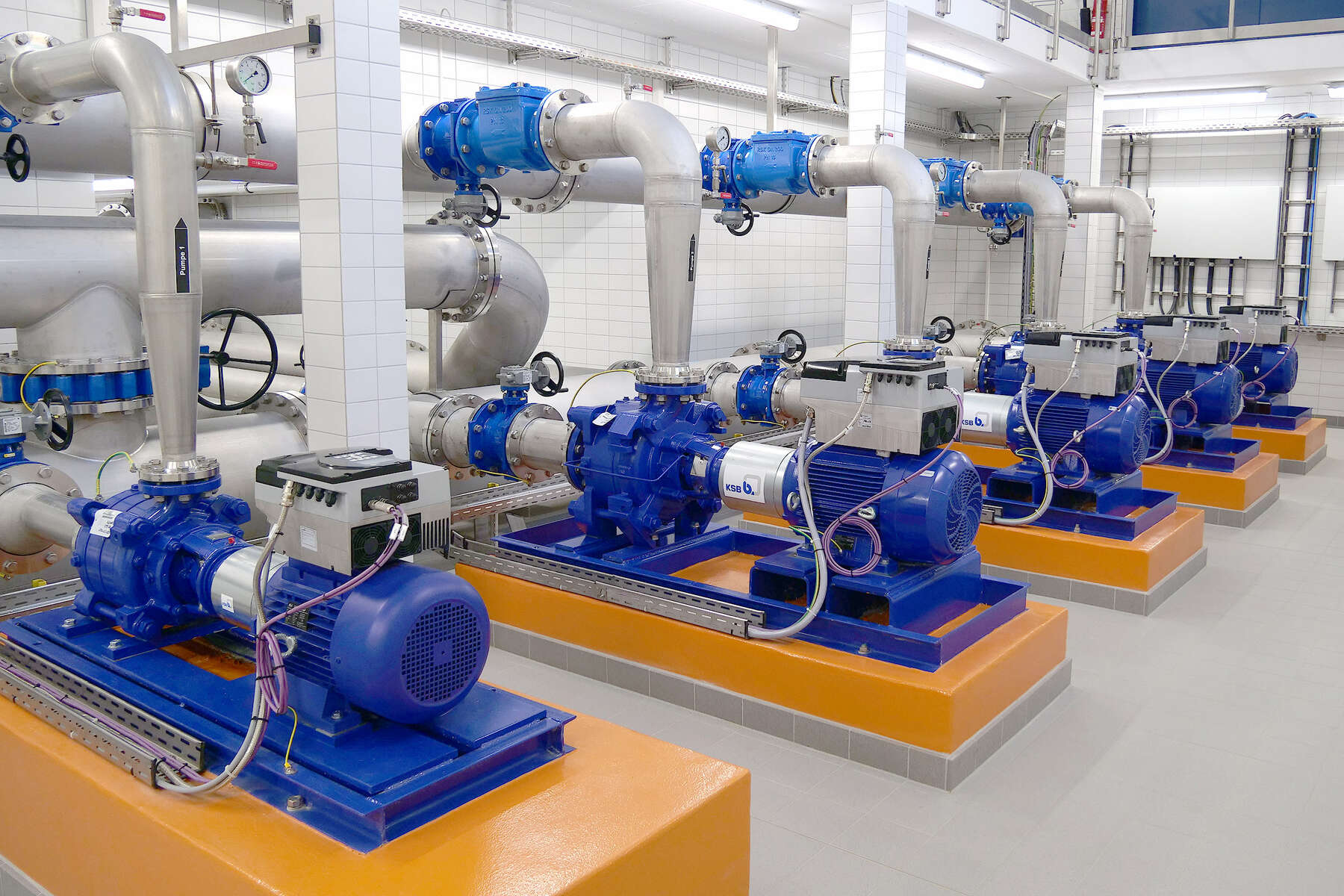
From ease of service to efficiency: What are the differences and similarities of dry-installed and wet-installed pumps?
Types of water supply pumps: Comparing apples and pears
Waterworks with dry-installed pumps and submersible borehole pumps (C)KSB2021
Direct comparison of dry-installed pumps and submersible borehole pumps
Multitec high-pressure pump: dry-installed and openly accessible
- Vertical, horizontal or angled: highly flexible choice of installation positions.
- Easy to service and maintain as all areas of the pump and all connections are freely accessible.
- Easy to automate and digitalise as the pump can simply be fitted with sensors to monitor the pump operation and enable predictive maintenance.
- Highly efficient operation can be achieved by combining the pump with a synchronous reluctance motor.
- Comparatively high noise levels caused by the motor being free-standing in the room rather than being surrounded by the fluid.
- Wear parts requiring regular maintenance at defined intervals.
UPA submersible motor pump: in a pressure shroud, completely surrounded by the fluid handled
- With its hydrodynamic bearings UPA is completely maintenance-free. When installed in a pressure shroud, it can be used for the same applications as dry-installed pump sets.
- UPA’s shroud connections can be chosen as required. Horizontal or vertical installation is possible, optionally with radial or axial flanges.
- On the inside, the UPA submersible motor pump runs permanently in water, which means: Flooding of the system will not harm the motor in any way.
- The noise levels are considerably lower, making the pump sets suitable for installation in residential areas, for example.
- The pump set’s enclosure makes it hard to access. If in doubt, the pump set will have to be removed from the system.
- The choice of automation and digitalisation accessories is smaller than for dry-installed pump sets.
Overview of main differences between UPA and Multitec ©KSB 2021
Multitec
- Standardised motor
- Rolling element bearing and mechanical seal
- External lift check valve
- Runs in air only
- Motor- or cabinet-mounted FI
- No filter necessary
- Highest efficiencies
UPA
- Wet motor
- Maintenance-free
- Integrated lift check valve
- Runs in water only
- Cabinet-mounted FI + motor cable
- Output filter recommended
- Highest efficiencies thanks to high-efficiency hydraulic systems and UMA-S high-efficiency motor
UPA and Multitec from the point of view of efficiency and life cycle costs
Characteristic life cycle of a UPA and a Multitec pump for a period of 10 years
Characteristic life cycle of a UPA and a Multitec pump for a period of 10 years
Conclusion
Suitable products for water extraction
Multitec
Multistage horizontal or vertical centrifugal pump in ring-section design, long-coupled or close-coupled, with axial or radial suction nozzle, cast radial impellers and motor-mounted variable speed system. ATEX-compliant version available.
UPA 200 / UPA S 200
Single-stage or multistage single-entry centrifugal pump in ring-section design for vertical or horizontal installation. Optionally available with lift check valve or connection branch. For well diameters of 8 inches and above.
MAMMOUTH
Centred-disc butterfly valve, sealed by elastomer liner, with manual gearbox, electric, hydraulic or counterweight actuator, U-section body with flat faces (T5), connections to EN, ASME or JIS.